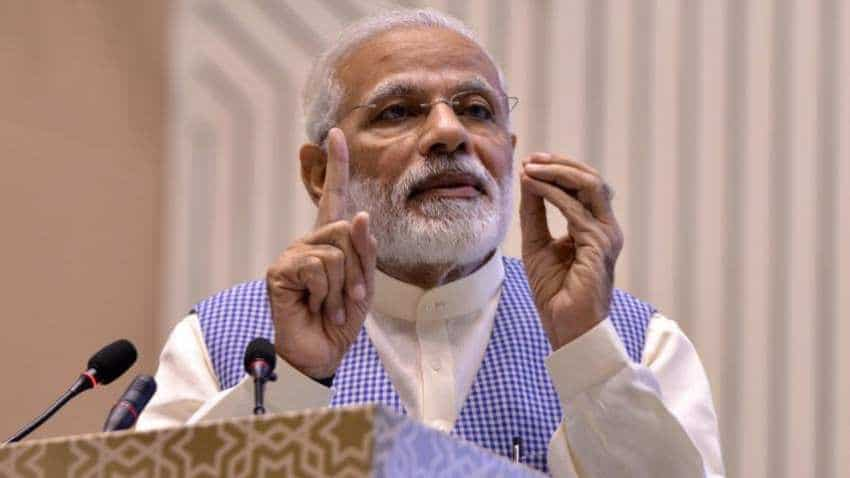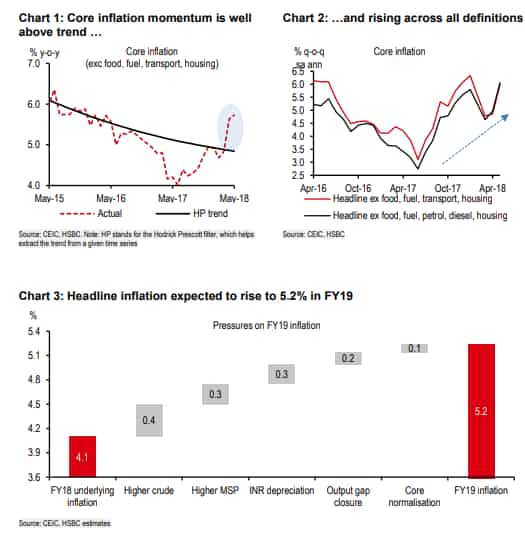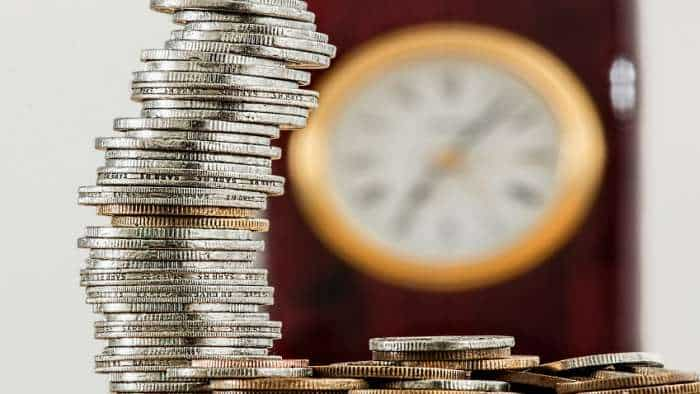Experts split over Indian economy; here is what makes economists cut growth forecast
In a latest move, the International Monetary Fund (IMF) has trimmed India's GDP growth forecast for Indian economy to 7.3% for FY19 fiscal from previous 7.5%.

When India came back to record GDP growth of 7.7% in last quarter of FY18 (Q4FY18), everything seemed well for the road ahead. With the latest growth rate, Indian economy is now standing at 18-month high, which is a strong agenda for Prime Minister Narendra Modi government who is preparing for upcoming 2019 general election. It felt like a ray of hope for Modi-government and it would not be wrong they did get saved with this economic growth, considering all those criticism cited by Opposition parties and many experts over their bold launch of demonetisation and Goods and Services Tax (GST). Now time has changed, where everything seemed bright, experts are now having two opinions over the Indian economy’s growth ahead, and guess what! Not only notebandi and GST continue to hamper it, there is a bucket full of negative issues hovering over India.
In a latest move, the International Monetary Fund (IMF) has trimmed down their GDP growth forecast for Indian economy to 7.3% for FY19 fiscal from previous 7.5%. However, the country still remains on top spot in global growth but such cut after 7.7% number in Q4FY18 raises eyebrows.
IMF was not alone, even Fitch Rating expects the same growth for FY19. According to Fitch Ratings, temporary drag is still there from demonetisation and GST. Though they will cool down in years to come ahead, but for now they pinching the economic growth. Even Asian Development Bank (ADB), World Bank also project 7.3% growth rate for India’s GDP for entire FY19.
source: tradingeconomics.com
The Reserve Bank of India (RBI) projected 7.3% GDP growth rate in first half of FY19, while a rate of 7.4% in second half.
On the other hand, Deutsche Bank has estimated a 7.5% growth rate for FY19. Similar expectations were from Care Ratings.
Shockingly, a recent report of Motilal Oswal predicts even lower GDP growth rate. Analysts of this broking firm said, “We expect real GDP growth to stay strong at 7.5-8% in 1QFY19, as against 7.7% YoY in 4QFY18. Nevertheless, we expect growth to peak out in 1QFY19 and weaken for the remaining three quarters of FY19. Accordingly, we continue to expect real GDP to grow by sub-7% for the second consecutive year in FY19.”
Where is Indian economy headed that would be interesting to watch when experts are of two opinions. For now, these are the list of issues that will definitely make an impact on the country and hence the NDA government.
Trade deficit would be one big issue that will give sleepless night to the government. Trade deficit widened sharply to US$16.6bn, near its previous 5-year peak when crude oil was hovering ~US$100/bbl. Pace of growth in exports and imports remained strong at 17.6% yoy and 21.3% yoy, respectively.

Dhananjay Sinha and Kruti Shah said, “We expect India’s trade deficit to remain elevated in the backdrop of rising commodity prices, recovery in domestic demand conditions and mounting global trade restrictions. Trade deficit in Q1FY19 is likely to widen near a 5-year high of 2.5-2.7% of GDP on sharply wide merchandise deficit and relatively insignificant movement in invisibles (to offset such a sharp rise in trade deficit).”
The duo added, “The overall BoP position in Q1FY19 is likely to witness depletion in foreign exchange reserves by US$14bn, which would be the highest since Dec’08.”

Further monetary policy tightening because of higher inflation prediction ahead will have its own thunder in the economy.
HSBC Global Research expects inflation could rise to 5.2% in FY19 (from 3.6% last year). Considering this, they have brought forward their expectation of a 25bp repo rate hike to August (from October), and have added a 25bp rate hike in 4Q 2018.
Government delivered on its promise to raise MSPs but has not revealed its procurement strategy. HSBC said, “Our base case scenario combining traditional procurement for paddy (rice), and direct compensation to farmers for other crops suggests that inflation could rise by 25bps in FY19 (50bps in 2H).”
HSBC says, “Thanks to lower inflation and exchange rate volatility, reduced trade openness, and Local Currency Pricing of imports, India's Exchange Rate Pass through (ERPT) coefficient has fallen. Yet, given its large propensity to import, a 6% Rupee depreciation could add 25bps to inflation.”

Rising crude oil will not just impact trade deficit, they will also impact inflation. It is being expected that, this could increase inflation by 40 basis point ahead.
Anagha Deodhar analysts at ICICI Securities said, “Although investments are growing well, weakening growth in private consumption is a cause of concern.”
Private consumption growth decelerated to 13-quarter low of 2.7% while full-year private consumption growth stood at 5.4%. This indicator stayed at 6.6% mark in both Q1FY18 and Q2FY18. Further it decelerated to 5.6% in Q3FY18 when GDP rose to 7%, and now it has dropped to 2.7% where India has seen a massive 7.7% growth rate.
What adds to the shocks is the deficit monsoon. Recently, a Skymet report revealed that monsoon remained in deficit and June has ended with countrywide rainfall deficiency of 5%. July too began on a deficit note, which did not improve and rather increased to 9% in the first week of July.
In India farm output depends on rains to a 55% extent. Not only this even, India obtains over 75% of its water through rains. If there is deficit monsoon, than crops like rice, oil seeds, pulses and cereals see a delay in their growth. This can even lead to crop failure across regions.
Apart from the above factors, IMF also revealed that possible triggers include rising trade tensions and conflicts, geopolitical concerns, and mounting political uncertainty will also play their role.
Get Latest Business News, Stock Market Updates and Videos; Check your tax outgo through Income Tax Calculator and save money through our Personal Finance coverage. Check Business Breaking News Live on Zee Business Twitter and Facebook. Subscribe on YouTube.
RECOMMENDED STORIES

Power of Compounding: How many years will it take to reach Rs 3 crore corpus if your monthly SIP is Rs 4,000, Rs 5,000, or Rs 6,000

Power of Compounding: Salary Rs 25,000 per month; is it possible to create over Rs 2.60 crore corpus; understand it through calculations

Reduce Home Loan EMI vs Reduce Tenure: Rs 75 lakh, 25-year loan; which option can save Rs 25 lakh and 64 months and how? Know here

Top 7 Large and Mid Cap Mutual Funds with Best SIP Returns in 5 Years: No. 1 fund has turned Rs 15,000 monthly SIP investment into Rs 20,54,384; know about others

New Year Pick by Anil Singhvi: This smallcap stock can offer up to 75% return in long term - Check targets
12:05 PM IST








 IMF says India's GDP growth to moderate to 7% in 2024 and 6.5% in 2025
IMF says India's GDP growth to moderate to 7% in 2024 and 6.5% in 2025  India to clock GDP growth of 7% in FY25: NITI Aayog member
India to clock GDP growth of 7% in FY25: NITI Aayog member India to regain its share in global trade on back of sustained growth rates: DPIIT Secretary
India to regain its share in global trade on back of sustained growth rates: DPIIT Secretary RBI forecasts India's GDP growth surging beyond 7%
RBI forecasts India's GDP growth surging beyond 7% GDP set to grow 8% or more in January-March quarter: FM Nirmala Sitharaman
GDP set to grow 8% or more in January-March quarter: FM Nirmala Sitharaman